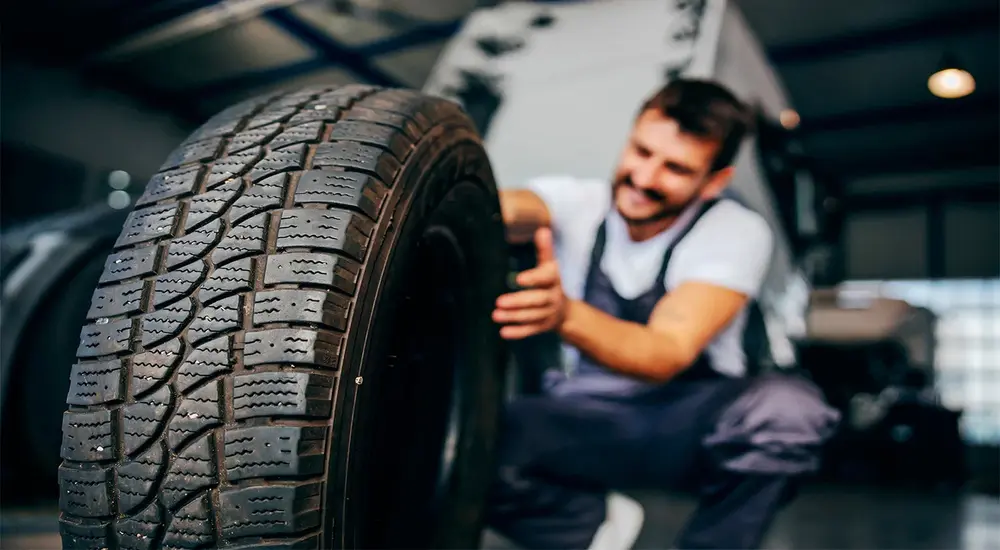When most people think about car maintenance, they focus on oil changes, brake checks, or keeping the engine in shape. But there’s one key factor that often flies under the radar — tire workload. In a country like the UAE, where road temperatures soar and long-distance drives are the norm, understanding tire workload isn’t just useful, it’s essential.
If you’ve ever glanced at the sidewall of your tyre and seen a string of numbers and letters, one of those is your tyre’s load index. That number tells you how much weight each tyre can safely carry. And it’s more important than you might think.
What Does Tire Workload Actually Mean?
Tire workload refers to the maximum weight a tyre can safely carry at a specific air pressure. It’s represented by the load index — a number you’ll find on the side of your tyre. For instance, a tyre marked with load index 91 means it can carry up to 615 kg. Multiply that by four tyres, and you get your car’s total supported load.
But that number isn’t just about the car itself. It also includes passengers, cargo, and in some cases, trailers. If you exceed that load, your tyres work overtime, leading to faster wear, poor fuel economy, longer braking distances, and in the worst case, blowouts.
Why Tire Workload Matters in the UAE
Driving in the UAE is unlike many other regions. We’re dealing with blazing sun, long highways, and quick transitions from city traffic to desert stretches. That constant pressure on your tyres means choosing the right load index isn’t optional — it’s crucial.
Whether you’re taking Sheikh Zayed Road to Abu Dhabi, cruising around Dubai Marina, or heading for a desert escape in your SUV, the right tyre workload helps ensure smoother, safer driving.
What Affects Tire Workload?
Several factors can impact how well your tyres handle weight:
- Vehicle Type: SUVs, pickups, and vans need tyres with higher load ratings compared to compact cars or sedans.
- Tyre Pressure: Even with the right load index, underinflated tyres can’t perform properly. Keep your pressure in check.
- Speed Rating: Driving fast? High speeds add extra stress to tyres. Your load index and speed rating should match your driving style.
- Road Conditions: If you often go off-road or carry heavy loads, choosing tyres with a higher load capacity adds extra protection.
How to Read the Load Index
Your tyre’s load index is easy to find — it’s on the sidewall alongside the size and speed rating. For example, in 205/55 R16 91V, the 91 is your load index. A quick look at a load index chart will tell you that 91 equals 615 kg.
Still unsure? Check the sticker on the driver’s side door or open your car manual. These sources give you the exact load recommendations set by your car manufacturer.
Risks of Ignoring Tire Workload
Using tyres that aren’t rated for your vehicle’s weight can lead to:
- Faster, uneven tyre wear
- Overheating and potential blowouts
- Difficulty steering or braking effectively
- Increased stopping distance
- Invalid tyre warranty in case of overload damage
In short, it’s just not worth the risk — especially when UAE roads already present enough challenges.
When Should You Consider Tyre Replacement?
Sometimes, it’s not just about the load index. Your tyres might need replacing if you notice:
- Cracks on the sidewall
- Bulges or visible deformities
- Constant air pressure loss
- Vibrations while driving
- Tyres older than five years, even if the tread looks okay
If you’re unsure, a quick search for tyre replacement near me will lead you to service centres that can inspect your tyres and recommend the right load capacity for your vehicle.
How to Choose Tyres Based on Load Capacity
Here are some useful tips when it’s time to buy new tyres:
- Never go below your vehicle’s recommended load index
- A bigger tyre doesn’t automatically mean a higher load rating
- For heavy use or frequent long trips, consider Load Range C or D tyres
- If you’re regularly driving in UAE heat, look for tyres with heat-resistant compounds and reinforced sidewalls
A professional tyre specialist can guide you toward the best options based on how you use your car.
FAQ
What does the tyre load index number represent?
It shows how much weight a tyre can safely carry when properly inflated. Each number on the index corresponds to a specific weight in kilograms.
How do I know if my tyres support my vehicle’s weight?
Check the manufacturer’s specs inside your door or in the owner’s manual, then match the load index printed on your tyre sidewall.
Can I use tyres with a higher load index than required?
Yes. Using a higher index is safe and may even be recommended for heavier loads. Just avoid using anything lower than what’s recommended.
Does an overloaded tyre affect fuel economy?
Absolutely. Extra strain means more rolling resistance, which leads to lower fuel efficiency and faster wear.
When should I change my tyres because of load issues?
Replace them if you spot damage, they’re too old, or you often carry loads they weren’t built for. Staying within safe workload limits protects your vehicle and passengers.
Conclusion
Tire workload might not be something you think about every day, but it plays a huge role in your car’s performance and safety. In the UAE, where hot weather and long drives are part of daily life, having the right load-rated tyres can make all the difference.
Take a few minutes to check your tyres — look at the load index, confirm your pressure, and don’t ignore early warning signs. The peace of mind that comes with knowing your tyres can handle whatever the road throws at them is worth it every time you start the engine.
